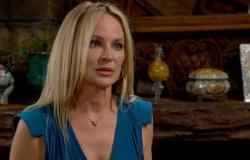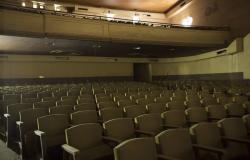The documentary film “Amoonafi” (1H 54) by Bara Diokhané, who has swapped his lawyer’s robe for that of a documentary filmmaker, is somewhat misleading in its title which suggests that it is indeed the adaptation of a story. Nay! Unless by slipping, we think of the history of a generation. Here too, not every story is a tale.
“Amoonafi” is more of an choral documentary in which each witness contributes his note, shedding light on the era of the 1970s, 80s and 90s with the excitement of young artists and young lawyers frequenting the world of the arts, crossing paths in the same cafes from downtown Dakar. Barah. Diokhané establishes himself as the metronome of everything that is said without the film truly shifting into a portrait documentary. In what the film lets us see, Bara Diokhané plays a triple role; that of a less messy director than in these previous productions dominated by formal, and even experimental research (see, “If the Trees Could Talk”; “Homage to Randy Weston” emergency documentary in the manufacturing process)
“Amoonafi” borrows its musical score from jazz with the late Billy Congoma as “scat” and his voice with Gorean accents and who was the first to bring Djibril Diop onto the stage. He was the master of Assico, festive music, based on singing, dancing and percussion that he brought out of the ghetto with the Sandial football team. Billy and his faithful instrument appeared in “Hyènes” by Djibril Diop Mambety. A sort of return to the elevator.
In this film score, director Bara Diokhané acts as a grid man serving as a reference point for the other chorus speakers who provide a sequence in what is given to us to see and hear. They stimulate the story. The filmmaker architect Nicholas Sawalo Cissé and his wife Bineta provide a certain freedom to the harmonic framework of the story. Director Ben Diogaye Beye, who, at the time, was one of the emerging filmmakers of the late 70s and early 80s. Today, with his feet in his senior years, he brings a good dose of wisdom to the bitterness that was devastated when he was dispossessed of his film project “Thiaroye Terre Rouge” and whose script manuscript co-written with Boubacar Boris Diop has just been published by the publishing house L’Harmattan under the title “Thiaroye 44 Scenario Unpublished”. The essential Issa Samb Jo Ouakam, colorful, lets himself go in his gestural improvisations and his deliberately hermetic verve. Straddling the musical art and the legal field, Youssou Ndour, one of the leading figures of Senegalese music, shuttles between the speakers.
Amoonafi is also a dual film which weaves bridges between the different parts where the black dresses appear, which retrace the struggle of the young lawyers of these years of excitement, some of whom became art collectors. Maître Doudou Ndoye, emeritus jurist, Maître Leity Ndiaye among others. And another part highlighting the march of visual and musical arts with its headliners: Mor Faye, Youssou Ndour, Zulu Mbaye visual artist and company quickly joined by Baba Wane, former Minister of Culture.
“Amoonafi” is a documentary that breaks down barriers between the arts, combining archives, press clippings, musicians, filmmakers, visual artists, museologists, collectors, gallery owners, poetic texts, all retracing an era in the form of a Jam session closed by the immemorable Doudou Ndiaye Rose, exceptional drummer. A striking film.
BABA DIOP






